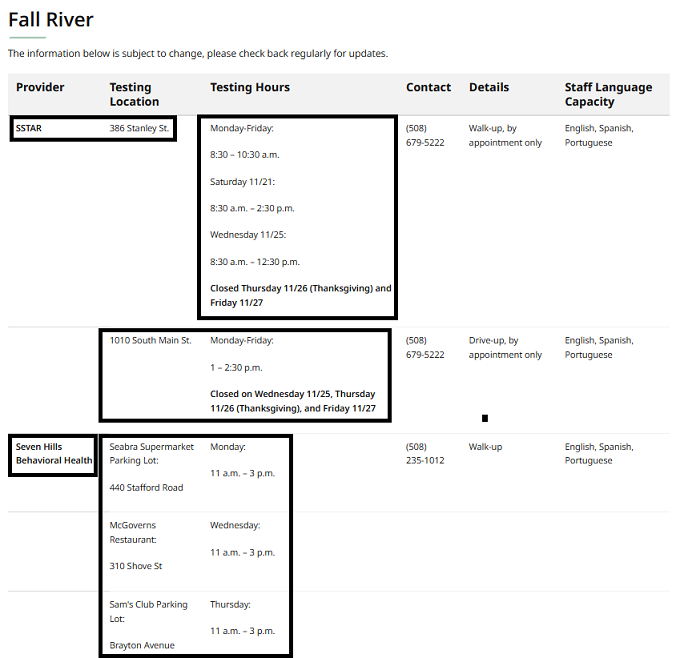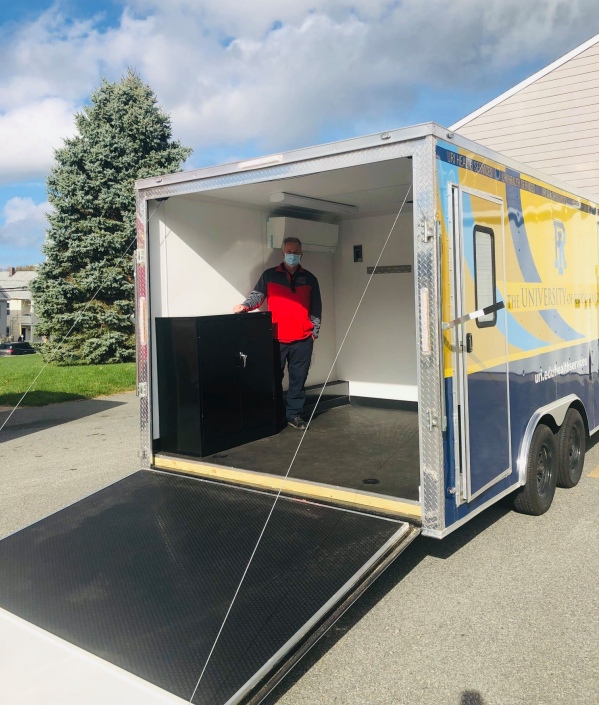By Chris Lisinski
State House News Service
In the midst of a COVID-19 surge and after weeks of prodding schools through press conferences and memos to bring more students back into classrooms, the Baker administration upped the ante Friday by formally urging all communities to avoid remote-only education wherever possible.
New guidance from the state Department of Early and Secondary Education (DESE) instructs cities and towns in any risk designation below the most severe level to resume fully in-person schooling. Even those in the highest-risk red category should opt for hybrid models rather than fully virtual options, the administration now says.
Schools should only reverse course from prioritizing partial or fully in-person learning if there is suspected in-school transmission or a major outbreak in the community, officials said.
About 23 percent of districts are still fully remote, a DESE spokesperson said Friday.
The push for in-person schooling comes as the administration also overhauled its stoplight system measuring COVID-19 transmission risks, making changes that will sharply curtail the number of high-risk communities.
The updated guidance represents an escalation in the administration’s expectations as officials and medical experts continue to warn about the lasting educational, social and emotional harm that staying home can inflict on children.
“Educators, students and parents all agree that even under favorable circumstances, remote learning is a second-best option that should only be used as a last resort,” Education Secretary James Peyser said at a Friday press conference.
In August, DESE’s guidance anticipated that communities color-coded red would operate schools remotely and those marked yellow would choose hybrid models or fully remote with extenuating circumstances.
Gov. Charlie Baker and other administration officials have been increasingly arguing that there is little evidence linking COVID-19 transmission to in-person schooling. They have also been ramping up the push to bring students back in most communities, even as local officials in some cities and towns opt for remote models as a precaution.
“At the same time Governor Charlie Baker is advising families not to gather inside with others for the holidays because it is not safe, he is pressuring schools to open for full in-person learning. The state’s demands make no sense,” said Massachusetts Teachers Association President Merrie Najimy. “Indeed, educators have wanted nothing more than to be back in person with their students. It has been joyful for educators and students to be back together, no matter which model they are following. The state should not threaten or pressure districts to adopt practices that they have good reason to believe are not safe – and that is what is being done today.”
DESE reported 252 new cases in Massachusetts schools over the past week as statewide infection numbers continue to rise, but Baker said the total number of positive cases is minute compared to the more than 450,000 students now in public school classrooms each week.
State data based on contact tracing, while covering only a portion of confirmed COVID-19 cases, also found little evidence of cluster outbreaks in schools.
“At this point, there is clear and convincing scientific data that shows children are at significantly less risk of developing serious health issues from exposure to COVID-19, and there is clear and convincing scientific data that shows learning in a classroom, as long as people are playing by the rules, does not lead to higher transmission rates,” Baker said.
While the new guidance significantly ramps up the administration’s push for more in-person learning, it is not clear how hard Baker and his deputies would crack down on local or union leaders who still hold out.
The administration has in recent months threatened to audit districts that remain remote in communities with low infection levels, even as Baker and other officials stress the importance of local decision-making.
Asked Friday if a district would face penalties for remaining remote for several more months as an added precaution, DESE Commissioner Jeff Riley declined to answer directly.
“We’ll address that with each individual,” Riley said. “I don’t want to speak about hypotheticals, but we’ll certainly, based on your track record in the past, address when we feel that people aren’t following state guidance.”
The state will also provide rapid mobile testing for schools with clusters of positive cases at no costs to the districts, starting this month. Riley said those tests should not be used for “broad-scale asymptomatic testing in schools,” instead limited only to those who display symptoms for the highly infectious coronavirus.
“The time to get kids back to school is now,” Riley said. “It has become increasingly clear that this virus is going to be with us for a while.”
Dr. Mary Beth Miotto, vice president of the Massachusetts chapter of the American Academy of Pediatrics, joined administration officials at the press conference, where she praised the updated school guidance as a step that will “help school districts and local boards of health create COVID plans that are more relevant to transmission in their specific populations.”
She warned that the health risks of remote learning are becoming more and more clear to medical professionals, citing personal experience in her Worcester practice of pediatric patients adopting sedentary lifestyles during the pandemic and an observed rise in youth suicide attempts.
“Many of these kids with suicidal thoughts and attempts don’t have a history of behavioral health problems,” she said. “They’re typical children bending or breaking under the stress of the pandemic, and specifically from being alone for long hours at the computer.”
Administration officials increased their push to expand in-person learning with case numbers on the rise in Massachusetts — Baker told municipal officials on Thursday that a “second surge” is “certainly underway” — and alongside a significant overhaul to how the state measures COVID-19 risks at the community level.
The state will now measure color-coded local public health outlooks on different scales for small-, medium- and large-population cities and towns, taking into account both a higher threshold of cases per 100,000 residents as well as positive test rates.
Under the system that has been in place since August, only incidence rates count toward a community’s risk level, with those home to an average daily rate of eight or more cases per 100,000 over the past two weeks marked red.
To earn the highest-risk designation moving forward, communities with fewer than 10,000 residents must record more than 25 cases in the sample period. Those with populations between 10,000 and 50,000 must have either 10 or more cases per 100,000 residents or a positive test rate of 5 percent or higher. Those home to more than 50,000 people will only be deemed in the red if they report both at least 10 cases per 100,000 and also a positivity rate of at least 4 percent.
With those changes, the number of communities marked red will be slashed by nearly 85 percent, from 121 in last week’s report under the old metrics to 16 this week under the new metrics.
Asked Friday if the administration was changing the rules to reduce the number of highest-risk communities, Baker said including more measurements improves the utility of the system and helps incentivize testing.
“I happen to think this is a more nuanced and more accurate way to test how communities are doing: not just in terms of their cases per 100,000, but how they’re doing with respect to testing practices and policies,” Baker said. “We want communities to test. I don’t want some communities to say, ‘I’m not going to test because I’m worried about increasing my numbers.’ ”
Najimy, of the MTA, said the new metrics “will dramatically reduce the number of communities identified as high-risk just as the numbers of coronavirus cases, hospitalizations and deaths are increasing in Massachusetts. There is a real disconnect between the changes and the current situation. In fact, the new metrics may encourage people to relax their guard when they should be more vigilant than ever.”
The changes bring Massachusetts more in line with how neighboring states measure municipal risk levels and better account for nuance at a granular level, Baker administration officials said Friday.
They pointed as an example to Nahant — a tiny town with a population of slightly more than 3,400 — where only 12 confirmed cases could have pushed it into the red under the older measurement.
Because the count of communities in the red is smaller, the updates will also likely allow more cities and towns to advance into the next stage of economic reopening, in which they can bring back indoor performance venues and several recreational activities.




